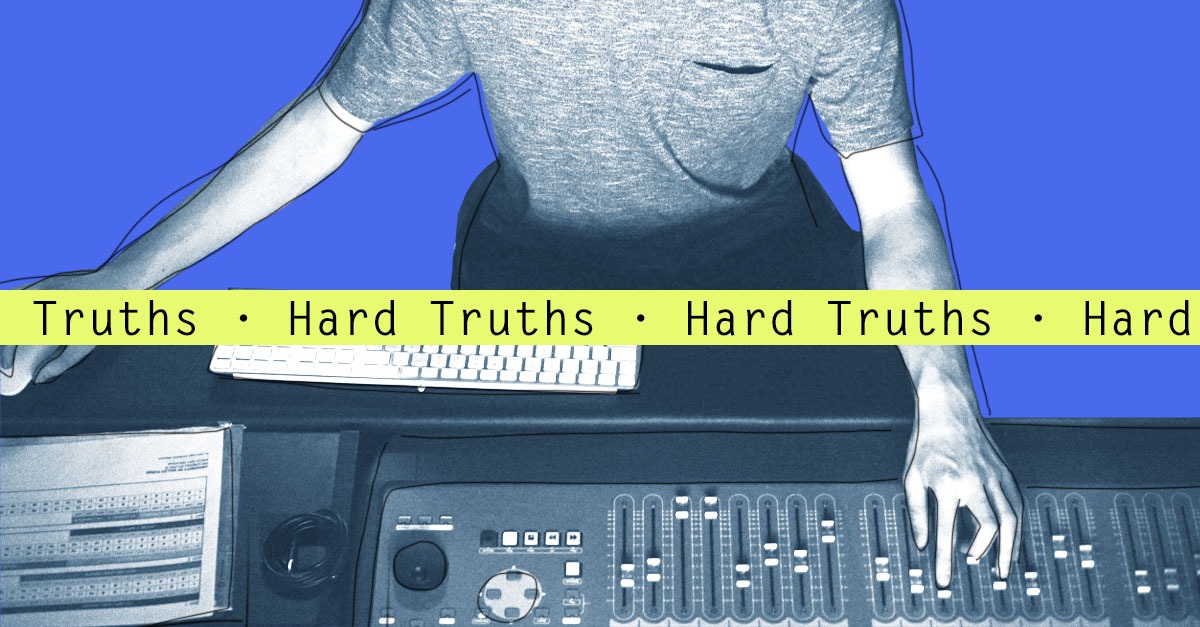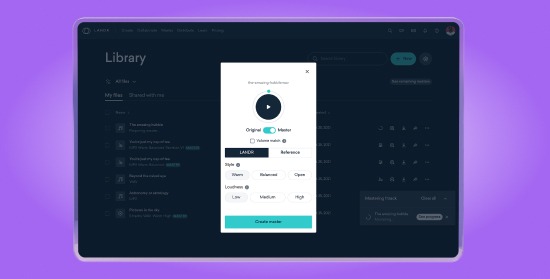
Hard Truths: Technical Standards Matter in Mastering

Everyone knows mastering is an essential phase in the life cycle of a song.
When the mix is finally complete, mastering is the step that puts the final touches on a track for release.
But mastering goes far beyond just giving your tracks a fancy coat of varnish.
In fact, proper mastering takes care of complicated technical details that you might not even know exist.
Here’s my hard truth for today: technical standards matter in mastering.
If you mainly think of mastering as a fancy form of master bus processing, you’re missing the essential functions a good master performs for a release.
But it’s not meant to be discouraging. Even if you don’t understand the finer points of preparing a track for release, there are plenty of ways to make sure you don’t miss out on the benefits of mastering.
Let’s get started.
The roots of mastering
Mastering began as a simple procedure to transfer a recording from the production medium to the listening medium.
In the early days that meant preparing the session master tapes to work correctly with the vinyl cutting lathe.
Back then, mastering engineers were more like technicians whose main job was to ensure the finished vinyl played back properly on listeners’ record players.
Mastering began as a simple procedure to transfer a recording from the production medium to the listening medium.
For example, if the low frequencies were too overpowering, the needle could jump right out of the grooves!
Mastering engineers made subtle corrections to make sure the vinyl sounded just right.
Despite the advances in technology, preparing the recording for the listening medium is still the number one job in mastering.
Digital files are much less fussy than vinyl records, but they too need proper attention to sound their best.
Get it wrong and your files could cause clipping when your listeners hear them.
The reason why has to do with loudness, headroom, dynamic range, digital precision and more.
If you don’t have time to delve into these difficult subjects, you might want to reconsider mastering your music yourself.
Mastering styles
As mastering evolved, engineers developed more sophisticated processes to squeeze every last drop of potential out of a track.
Along the way they turned mastering into the art form it is today.
Some time around the peak of the CD era, a new trend emerged in mastering. Engineers raced to produce the loudest masters they could.
The theory was that listeners would instinctively prefer the CDs that sounded louder on their stereos.
The evidence to support it wasn’t totally conclusive, but the resulting loudness war had a big effect on mastering.
As mastering evolved, engineers developed more sophisticated processes to squeeze every last drop of potential out of a track.
When it was all over, some engineers rediscovered the art of gentle vintage masters. Others continued to push the limits.
Each approach has its merits.
Modern loud masters can bring a sense of intensity and punchiness to the music—but they’re also a kind of technological marvel.
Delivering these astronomical levels without clipping or other negative consequences is no mean feat.
On the other hand, gentle, balanced masters can sound almost invisible. Performing these transparent enhancements correctly is its own challenge.
Doing either while maintaining standards for release is what makes mastering such a delicate task.
Reference mastering
Wherever you stand on this spectrum, the most important thing is getting a master that works for you.
AI-powered mastering and mastering styles cover plenty of ground. But it hasn’t always been possible to set the standard directly.
That’s where reference mastering comes in.
With a traditional mastering engineer it’s easy to communicate ideas by sharing references.
Many artists pass on a reference track along with their finished mix to give the engineer an idea of what they want.
Many artists pass on a reference track along with their finished mix to give the engineer an idea of what they want.
Reference mastering opens up these same possibilities with AI-powered mastering.
The reference track you upload provides the AI with cues about the frequency balance, dynamic range and levels.
It then uses advanced detection and processing to apply to the overall characteristics of the reference to your track
Unlike basic EQ match or other types of detection, LANDR AI masters your track to the reference while hitting the targets for loudness and dynamic range perfectly.
Reference mastering is the perfect way to guide LANDR toward a custom master based on a specific reference track.
Just remember you can’t legally use any reference track you don’t have the rights to.
Playing standards
Mastering isn’t as simple as it seems. When you’re creating a high quality file to push to streaming services, the technical details matter just as much as the aesthetic ones.
Maintaining that quality while finding your own sound is the key to presenting your track properly.
Try reference mastering the next time you’re looking for a specific sound on your next track.
Gear guides, tips, tutorials, inspiration and more—delivered weekly.
Keep up with the LANDR Blog.



